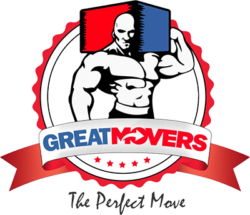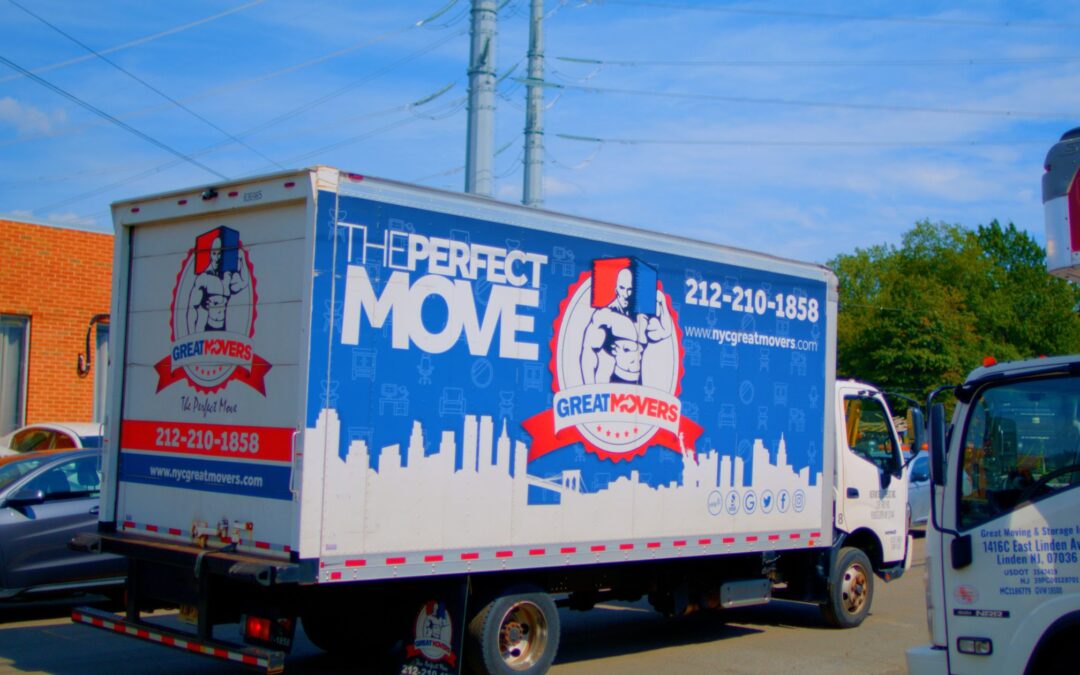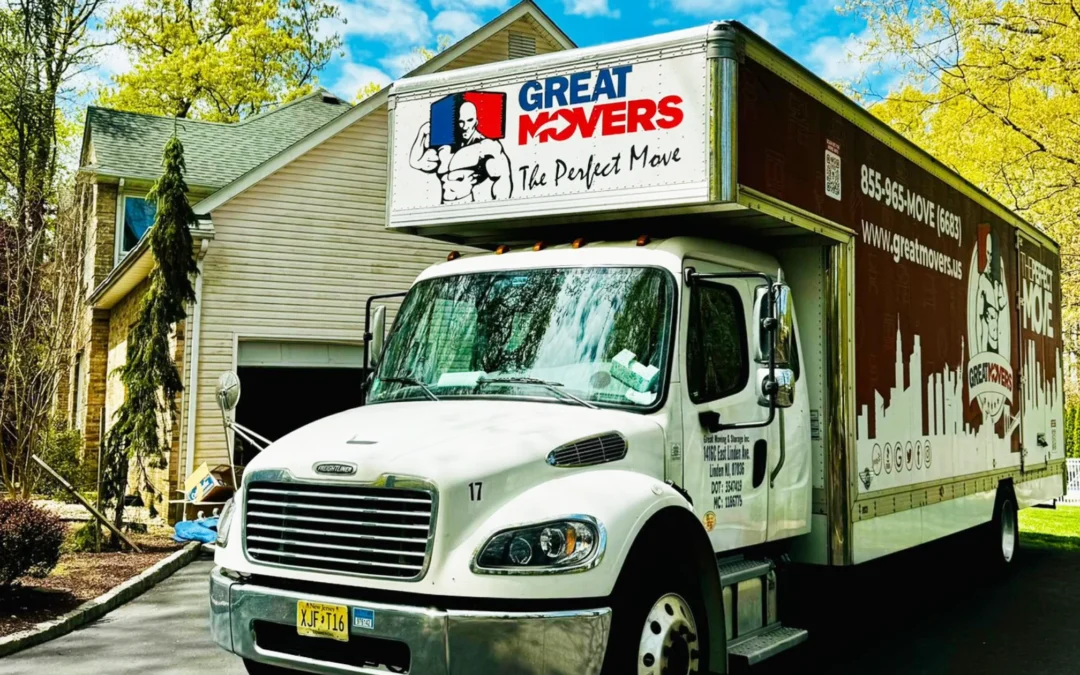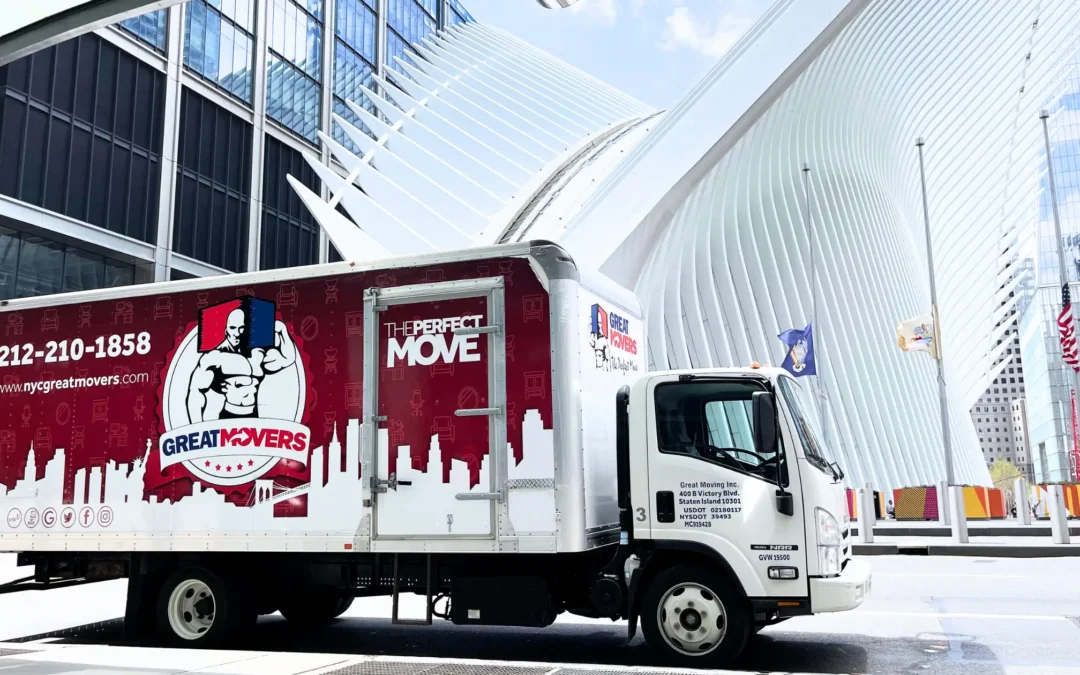If you’ve lived in New York City for any amount of time you probably already know there’s more to the city than just Manhattan. In total, there are five boroughs (Brooklyn, Queens, The Bronx, Manhattan, and Staten Island), with each bringing its unique flavor. Naturally, everyone has their own opinion on which borough is the best one, but each has its own strengths and weaknesses.
Whether you are moving to NYC from another state or making a local move to another borough, it’s important to choose the location that fits your needs, not just one that fits your image of a New Yorker. So how do you choose? Below is a quick guide on the five different boroughs that can help you decide where to live.
Manhattan
With a population of 1.7 million people, Manhattan might not be the most populous borough, but it is the most famous and recognizable. People from around the world flock to Manhattan to watch Broadway shows, enjoy delicious dining, visit world-class museums, and bask in the energetic buzz of this borough. Of course, the high number of tourists and high rents are what also turn away many native New Yorkers.
If you can afford it, there are many benefits to living in Manhattan. The most important being the commute time. Depending on where you live and work, you could easily find a job in your industry of choice that is walking distance away from your apartment. Speaking of jobs, there’s plenty of options to choose from whether you’re in finance, healthcare, tech, or the creative industry. Manhattan is home to almost every industry you can think of!
It’s also very easy to get around the borough thanks to the vast subway network. Besides the G train, you can catch every other train line somewhere in Manhattan and there are several cross-town trains that will take you from the east side to the west side. As well, you can easily get to every other borough once you’re in Manhattan. Yes, even Staten Island so long as you’re okay with riding boats! Its connectivity and that certain Manhattan energy are a few of the reasons why so many people want to move to NYC.
Living in Manhattan also provides unparalleled access to a diverse range of cultural experiences, entertainment, and career opportunities. The borough is a cultural hub, attracting world-renowned artists, performers, and intellectuals. By residing in Manhattan, you’ll have easy access to Broadway shows, live music venues, art galleries, and museums, immersing yourself in a vibrant and dynamic arts scene. Of course, living in other boroughs doesn’t mean you can’t see a Broadway show or check out the amazing museums. However, it makes it less convenient as trains and ferries might not run as frequently and the commute is significantly longer depending on where you live. Traveling to Midtown from Astoria might not be bad, but it will be quite a trek if you live deep in Brooklyn!
Despite only spanning 23 miles, Manhattan has distinct communities and neighborhoods. Each one has its own character and charm, which caters to various lifestyles and preferences. Some of the most popular neighborhoods to move to in Manhattan include:
- Upper East Side – home to top New York City institutions such as The Metropolitan Museum of Art and the Guggenheim. It’s also home to the United Nations and has a large concentration of private schools, making it a perfect place for families.
- Greenwich Village – a vibrant and ‘artsy’ neighborhood that still has that classic New York feel. It’s home to Washington Square Park and New York University. There’s also plenty of great dining options and it’s also close to both the midtown and downtown financial areas.
- Upper West Side – If you’re looking for a quiet area that still offers a ton of amenities, then the Upper West Side is a great option. You can get some culture at the Lincoln Center and then enjoy nature in Central Park.
- East Village – this vibrant and eclectic neighborhood is home to an array of vintage shops, artisan boutiques, and international cuisines. There’s little India on 6th street and St. Mark’s Place which is perfect if you’re looking for Asian cuisine. Go further east to Alphabet City and you’ll find a bit of greenery with Tompkins Square Park along with numerous community gardens dotting the neighborhood
Brooklyn
Located to the west of Manhattan via the Brooklyn, Manhattan, or Williamsburg Bridge, nowadays people think of affluent families and hipsters when they think of Brooklyn. Of course, this is a more recent characterization as back in the 90s and early 2000s, Brooklyn was more of a working-class borough. Of course, the rising rents in Manhattan drove out a lot of young people who eventually made their way out to Brooklyn. It has now become one of the most sought after boroughs to live in!
While it might have had a reputation in the past for being affordable when compared to Manhattan, increasing gentrification has actually bumped Brooklyn prices above some Manhattan rent! Still, Brooklyn is the most populous borough with around 2.7 million people. Its fast growth rate was due to its relatively low rent, decent train lines, and indie music and art scene. You can still find affordable rents if you’re willing to live a bit further into the borough.
Commuting in Brooklyn is almost as easy as traveling in Manhattan, so long as you don’t venture too far into Brooklyn. For the most part, you can access almost every area by subway or bus. Still, the further into Brooklyn you go, the fewer options you have. If you plan on working in Manhattan while living in Brooklyn, you’ll want to find a place that is close to the train lines you need. Luckily, the Atlantic Avenue subway station connects to multiple train lines so if your train stops there, you should hopefully be able to transfer without any fuss.
Whereas Manhattan might be more fast-paced, Brooklyn has a more relaxed vibe without sacrificing amazing cultural and entertainment venues. You can check out the Brooklyn Art Museum and head over to the Barclay’s Center for some concerts or sports games. If you’re looking for some nature, you can go to Prospect Park or head further south to Marine Park to walk along the Salt Marsh Nature Trail.
One of the biggest advantages to moving to Brooklyn is the sense of community fostered by local businesses and neighborhood initiatives. While there are large chain stores, there are still many charming bookshops, independently owned clothing stores, and various specialty stores. You can also enjoy things like street fairs, farmers’ marketings, and community events throughout the year regardless of which neighborhood you choose. Many people move to Brooklyn because they want a more relaxed environment for their home life, but still have the convenience of having everything within a 10 minute walk.
If you’re looking for some affordable places to live in Brooklyn some options include:
- Bayridge – located at the Southwest corner of Brooklyn, Bayridge remains one of the few classic New York strongholds in Brooklyn. You get to have amazing riverfront views, a tight-knit community, and, if you want, easy access to Staten Island via the Verrazano Narrows Bridge
- Kensington – This small neighborhood is located Southwest of Prospect Park and has a delightful row of Victorian houses along with the more traditional brownstones and apartment buildings. You have easy access to great food and public transportation
- Sunset Park – Located south of Park Slope, Sunset Park offers a booming Chinatown with noodle shops and dim sum spots. You also get great views of the Statue of Liberty and can relax in the historic Green-Wood cemetery.
Queens
While no one goes out of their way to visit Queens, that’s one of the reasons why it manages to keep its more relaxed and suburban feel when compared to other boroughs. Of course, the closer you are to Manhattan, the more developed it is with places like Long Island City and Astoria boasting some tall luxury buildings and business complexes. With that said, Queens still remains a mostly residential neighborhood so it’s great if you want a bit of peace and quiet without giving up those big-city perks. It’s a perfect place for families thanks to its more sleepy atmosphere and is also home to some excellent schools with students scoring higher than the national average on both math and reading proficiency (65% and 72% respectively).
With a population of 2.4 million people, Queens is the second largest borough and the most ethnically diverse with 48 percent of its residents being immigrants. It has a large number of Tibetans, making it the second (unofficial) capital of exiled Tibetans. In addition, it’s home to the second largest Chinatown in NYC as well as a large Little Indie in Jackson Heights.
Queens is also home to some amazing history. It was home to the 1964 New York World Fair that hosted the largest international exhibitions ever held in the United States. Today, you can now walk around Flushing Meadows Corona Park and see the remnants of the park from the large globe to the various pavilions. You can also catch some of the tennis stars during the US Open, which is held in Flushing Meadow.
If you’re thinking of living in Queens, be forewarned that there aren’t as many train options as Brooklyn or even the Bronx. Many Queens residents own cars in order to travel around the borough.
If you’re looking to move to Queens, some great neighborhoods include:
- Astoria – if you work in Midtown, Astoria is a great place to live as it will take 20 minutes to get to Midtown Manhattan. Naturally, this makes Astoria a popular place to live for young professionals so rents won’t be cheap. Astoria is also home to the Museum of the Moving Image and the New York Hall of Science.
- Flushing – located in the north-central portion of Queens, this is the fourth-largest central business district in New York City. You can easily live here without ever having to step foot in Manhattan if you don’t want to! There’s plenty to do and there’s a vibrant Chinatown where you can experience delicious Fujian Chinese food. In fact, Flushing is considered a ‘food mecca’ for Chinese regional cuisine outside of Asia.
- Jackson Heights – located in the northwestern portion of Queens, Jackson Heights has one of the most ethnically diverse communities in New York City. It has a beautiful historic district comprising garden city apartments and community gardens. It’s also home to a thriving street food scene with food from around the world including Nepal, Mexico, and Bangladesh.
- Ridgewood – Go further east past Bushwick and you’ll end up in this sleepy neighborhood. While this area is relatively new (it only got a unique zip code back in 1980) it has always distinguished itself from Bushwick due to its large Eastern European population. Its affordable housing prices have attracted many young professionals who have been able to become homeowners.
The Bronx
The Bronx is the only New York City borough that is not an island. Located to the north of Manhattan just over the Harlem River, it remains one of the least popular boroughs due to its high crime rates. However, since the early 2000s, it has seen a slow revitalization as new investments in tech and real estate have improved the area. Luckily, rent prices are still relatively low when compared to other boroughs so you can save yourself several hundred dollars if you live here.
While many people might associate The Bronx with hip hop, it’s also home to the biggest park in the city – Pelham Bay Park – as well as the Bronx Zoo, the New York Botanical Garden, and Yankee Stadium. It’s also home to Fordham University, which consistently ranks in the top 100 colleges and universities in the United States, and The Bronx High School of Science is considered one of the best public schools in New York City. It has produced eight Nobel Prize-winning alumni and is the secondary school that has produced the most Nobel laureates in science worldwide.
Some places in the Bronx are not accessible by subway so make sure to do your research before you move to the Bronx. For example, Spuyten Duyvil is technically part of the Bronx, but you will need to take Metro North or drive a car to get to and from the city. If you are off a subway line, be prepared to be packed into the train cars as most train stations will be packed full of people looking to commute to work.
There are benefits to living in the Bronx besides lower rent. During Hurricane Sandy, residents in the Bronx didn’t experience any flooding or power outages. And since you are not on an island, you don’t have to cross any bridges or tunnels if you want to travel further north. Plus, depending on where you live, the air quality is better in parts of the Bronx than Manhattan.
The Bronx has a diverse mix of housing you can choose from and, thanks to the borough not being as popular as Brooklyn or Queens, you could potentially buy your house or apartment. Some great neighborhoods include:
- Riverdale – if you’re looking for a quiet suburb, then Riverdale is a great option. This leafy enclave offers single-family homes or co-op apartments. It’s also home to Van Cortland Park – the third largest park in the city.
- Kingsbridge – just south of Riverdale is the hilly neighborhood of Kingsbridge and University Heights. Considered a favorite area for those on a budget, Kingsbridge is just across the Harlem River from Inwood. You can expect to find spacious apartments and plenty of parks and places to shop.
- Allerton/Laconia – this under-the-radar is great for people looking for a quiet, residential neighborhood. If you’re lucky, you might be able to snag a single-family house. Otherwise, there are plenty of apartment options for rent. It’s also close to the Bronx Zoo and Botanical Gardens so you’ll definitely have plenty to do.
Staten Island
Staten Island is often considered the forgotten borough as there are only two main access points – via the Staten Island Ferry or driving over the Verrazano Narrows Bridge. While Staten Island might have the smallest population, that doesn’t mean it doesn’t have a vibrant community. In fact, Staten Island offers a diverse population with numerous cultures and backgrounds, fantastic food and restaurants, talented local musicians, and more!
Now, if you work in Manhattan or another borough, living in Staten Island might not be ideal especially if you don’t have a car. Still, if you don’t mind longer commutes, it’s a great place to live. Plus, you can drop your car off at the Staten Island Ferry terminal and enjoy the daily ferry ride with stunning views of New York Harbor and the Statue of Liberty.
Besides all this, Staten Island also is one of the more affordable places to live and you could buy an actual house for what you would pay in other boroughs. Rents are also much more affordable with two bedrooms going for an average of $1,850. It’s a great option and you can always choose to live and work on Staten Island.
There are also plenty of outdoor activities to enjoy on Staten Island. You can visit the Staten Island Botanical Garden, which hosts a yearly light festival during the winter. It’s also home to the New York Chinese Scholar’s Garden, which opened in 1999. During the summer months you can visit the Freshkills Park, a park developed on a former landfill. It is the largest park to be developed in NYC since the 19th century and is three times the size of Central Park. Or you can opt to go to one of the many beaches on Staten Island such as the Cedar Grove Beach, South Beach, or FDR Roosevelt Boardwalk and Beach that provides excellent views of the Verrazano Bridge.
So where should you live on Staten Island? Some great neighborhoods include:
- Huguenot – this relaxing residential neighborhood gives you access to some amazing beaches and a great country club if you’re into golf. It’s also close to the Staten Island Railway so you can easily hop on a train to get to the ferry and into the city if necessary.
- Great Kills – don’t be fooled by the name, GreatKills is perfect for families. It has some of the best schools in New York and has plenty to do from shopping to enjoying the Great Kills Park.
- New Dorp – this densely populated neighborhood offers a diverse experience as it has a significant Italian, Albanian, and Polish population. Since there’s a large population, you’ll likely have better luck renting than buying a house. Still, you’re getting much more for your money than in Manhattan or even Queens.
Conclusion
Living in NYC can be a completely different experience depending on what borough and neighborhood you choose. Whether you’re looking for a more suburban feel or want to be in a bustling area, there’s truly something for everyone. Whether you’re looking to make a long-distance move or a local one, make sure to choose trustworthy NYC movers like NYC Great Movers to make moving day stress-free.
FAQ
What areas have the lowest crime?
Most of the boroughs are generally safe, but safety varies sometimes by the block! The best way to protect yourself is to always be aware of your surroundings and avoid walking around late at night.
How much does it cost to move to NYC?
It depends on how much stuff you have and where you choose to move to. However, you should factor in costs such as professional movers, security deposit, broker’s fee, first and last month’s rent, storage fees, and furniture. Sometimes a move can cost upwards of $10,000 or as cheap as $4,000 if you move in with roommates.
Should I have a car in NYC?
Where do you plan on moving to in NYC? You probably don’t need a car if you live in Manhattan, but you might want one if you live on Staten Island. Some areas in the Bronx, Brooklyn, and Queens also don’t have great access to public transportation so you might want to get one to get around easier.






